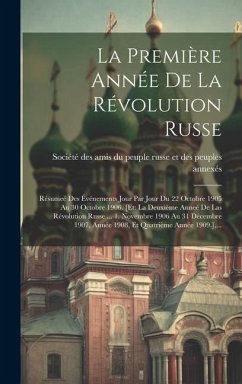
Relation Historique Des ÉvÃ(c)nements Du 30 Octobre 1836
Versandkostenfrei!
Versandfertig in über 4 Wochen
28,99 €
inkl. MwSt.
Weitere Ausgaben:

PAYBACK Punkte
14 °P sammeln!
Relation Historique des ÃvÃ(c)nements du 30 Octobre 1836: Le Prince NapolÃ(c)on à Strasbourg... recounts the failed attempt by Louis-NapolÃ(c)on Bonaparte (later Napoleon III) to seize power in France. Written by Armand Laity, a participant in the Strasbourg coup attempt, the book provides a firsthand account of the events surrounding the Prince's audacious but ultimately unsuccessful endeavor. This historical account offers valuable insights into the political climate of France in the 1830s, the ambitions of Louis-NapolÃ(c)on, and the early stirrings of what would become the Second Empi...
Relation Historique des ÃvÃ(c)nements du 30 Octobre 1836: Le Prince NapolÃ(c)on à Strasbourg... recounts the failed attempt by Louis-NapolÃ(c)on Bonaparte (later Napoleon III) to seize power in France. Written by Armand Laity, a participant in the Strasbourg coup attempt, the book provides a firsthand account of the events surrounding the Prince's audacious but ultimately unsuccessful endeavor. This historical account offers valuable insights into the political climate of France in the 1830s, the ambitions of Louis-NapolÃ(c)on, and the early stirrings of what would become the Second Empire. It details the planning, execution, and immediate aftermath of the failed coup, shedding light on the motivations and actions of those involved. Readers interested in French history, Napoleonic history, and the study of political upheaval will find this relation a compelling and informative resource. This work has been selected by scholars as being culturally important, and is part of the knowledge base of civilization as we know it. This work was reproduced from the original artifact, and remains as true to the original work as possible. Therefore, you will see the original copyright references, library stamps (as most of these works have been housed in our most important libraries around the world), and other notations in the work. This work is in the public domain in the United States of America, and possibly other nations. Within the United States, you may freely copy and distribute this work, as no entity (individual or corporate) has a copyright on the body of the work. As a reproduction of a historical artifact, this work may contain missing or blurred pages, poor pictures, errant marks, etc. Scholars believe, and we concur, that this work is important enough to be preserved, reproduced, and made generally available to the public. We appreciate your support of the preservation process, and thank you for being an important part of keeping this knowledge alive and relevant.












